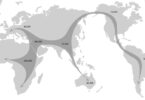In the complex networks of urban landscapes, the patterns of ethnic enclaves are as vibrant as they are revealing. These are areas where residents from specific ethnic or cultural backgrounds are concentrated. Marked by unique cuisines, languages, and celebrations, the true richness of these enclaves is found in the stories they tell about the daily experiences, adversities, and achievements of our ancestors.
The saga of ethnic enclaves is intertwined with the history of migration. As people have moved in response to political turmoil, the pursuit of economic prospects, or environmental calamities, they’ve often sought the familiarity of those with shared cultural ties, establishing tight-knit communities. These groups provided comfort in strange lands and helped keep traditions, languages, and customs alive.
Cities like New York, San Francisco, and London are often hailed for their diverse makeup. Yet, within these urban expanses lie pockets like Little Italy, Chinatown, and Brick Lane, each bearing the imprint of the immigrant waves that contributed to their growth.
Looking beyond the initial appeal of ethnic enclaves as destinations for cultural tourism, a deeper investigation can uncover a wealth of information. The architecture, for instance, may show the delicate balance between preserving cultural identity and adapting to new environments. A synagogue in New York’s Lower East Side, with architectural details reminiscent of Eastern Europe, speaks of the origins of its congregants.
Local publications, frequently in the residents’ mother tongue, provide a window into the immigrants’ experiences of the time: employment prospects, legal battles, or communal gatherings. For genealogists, these are precious sources of context and detail about the lives of ancestors.
Ethnic enclaves embody stories of endurance. For example, San Francisco’s Chinatown, established in the 1850s, is the oldest and one of the largest in North America. Despite entrenched prejudice and discriminatory policies, the community flourished, crafting a unique Chinese-American identity. They established schools, theaters, and businesses, and celebrated their cultural heritage while confronting the realities of their new country.
Likewise, areas like Harlem in New York narrate the journey of African Americans from the South, their cultural flourishing, and the civil rights endeavors that unfolded in its confines.
As ethnic enclaves continue to hold onto their cultural uniqueness, they face the impacts of globalization and urban development. Gentrification, in particular, threatens to displace the historical and cultural imprints these neighborhoods bear.
Yet, there is a concerted effort by many to safeguard their legacy. Initiatives to record oral histories, protect architectural landmarks, and invigorate cultural celebrations are underway. For genealogists, this presents an imperative to engage. Immersing ourselves in the histories of these enclaves allows us to recover stories at risk of being forgotten and to ensure they’re honored by future generations.
In our endeavor to trace our lineage, ethnic enclaves provide a glimpse into the lives our ancestors led. They reinforce that migration is more than a shift in geography; it’s about establishing a home, fostering a community, and making a mark on the world. As we navigate these neighborhoods, we become more than observers; we partake in a living history of culture and human endurance.






